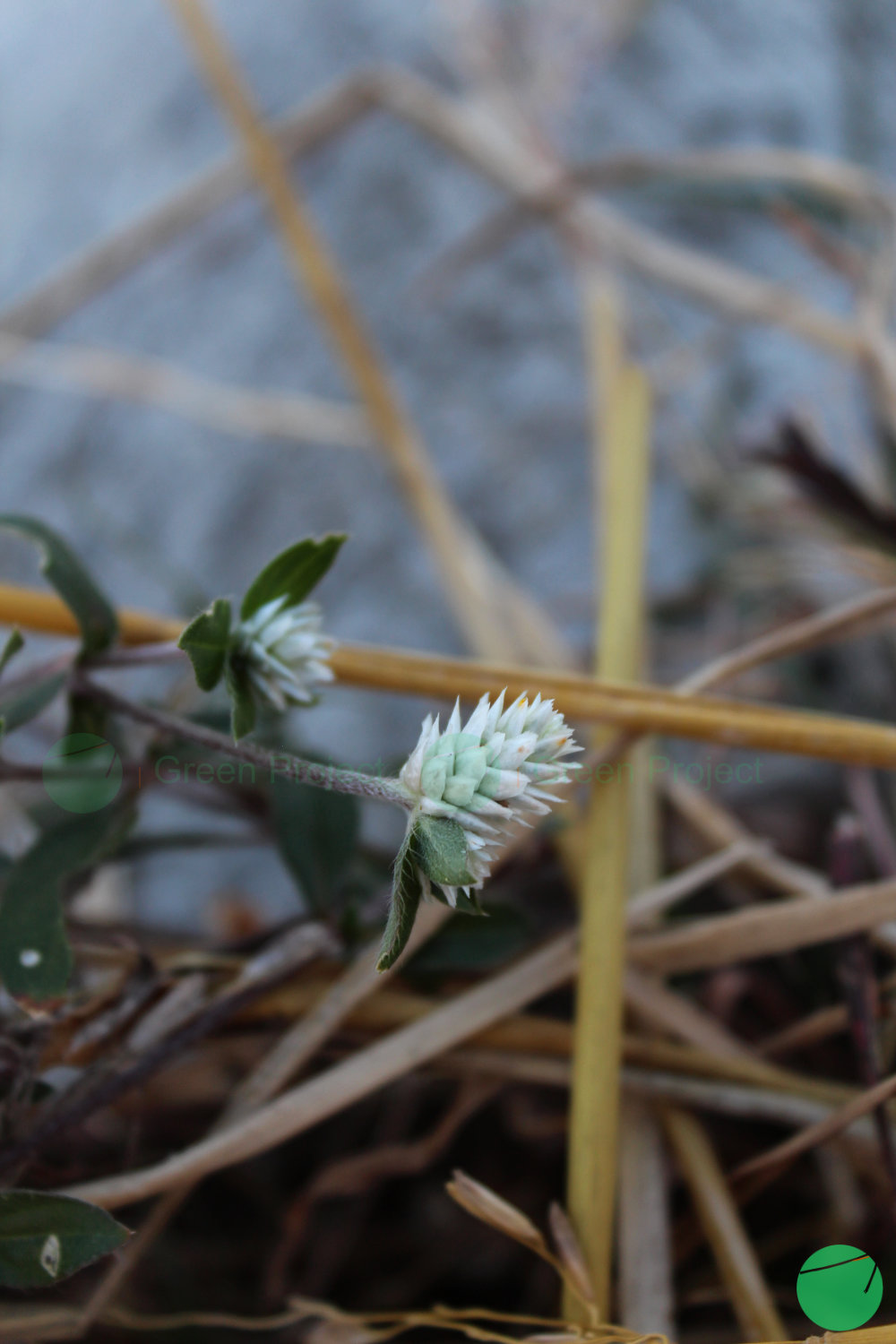Naming Identity
Bunga kancing is scientifically known in Latin as Gomphrena celosioides Mart. Internationally in English it is known as bachelor's button, prostrate globe-amaranth, arrasa con todo, soft khaki weed, or white eye.
Taxonomy
Kingdom | Plantae |
Phylum | Tracheophyta |
Class | Magnoliopsida |
Order | Caryophyllales |
Family | Amaranthaceae |
Genus | Gomphrena |
Species | Gomphrena celosioides |
Variations and Synonyms
Gomphrena celosioides Mart consists of two species, namely Gomphrena celosioides var. Hygrophila (Mart.) Pedersen, comb . nov. and Gomphrena celosioides var. fallax (Seub.) Pedersen, comb . nov. Gomphrena mariae of the variety Gomphrena celosioides Hygrophilia was synonymized by Stuchlik (1912) with G. serrata L. under the name G. decumbens Jacq (Pedersen, 1997).
Origin and History of Discovery
This plant is said to be native from the American continent, including America, Argentina, Bolivia, Brazil, Paraguay and Uruguay. It became naturalized in the Asian continent including Bhutan, Indonesia, the Philippines, Singapore, Sri Lanka, Papua New Guinea, Taiwan, Thailand and the African continent including Botswana, Ghana, Lesotho, Namibia, RSA, Swaziland and Zimbabwe as well as Australia (Gomphrena Celosioides, n.d. ).
In the Himalayan Region of India, bachelor's buttons are reported to have been introduced accidentally, although the route cannot be ascertained. In Mexico, bachelor's buttons have been reported as a weed in cultivated land, especially corn crops (Ventosa-Febles, 2022).
Meanwhile in Indonesia, this plant can be found on the edge of rice fields. Apart from that, it can also be found on the slopes of Mount Merapi as part of the floor vegetation.

Description of Form and Growth
Bachelor buttons are herbaceous plants or grasses with a height that can reach 50 cm. The roots are fibrous with the stem in a prone, prostrate or lying position. The leaves are sessile or petiolate with petioles measuring up to 0.6 cm long.
The inflorescence head is white with a pink or red tinge, round to short cylindrical with a diameter of 9 to 13 mm. Meanwhile, the flowers are in the shape of a dense lanate tube that is oval and has a thin apex with a size of 4 to 5 mm.
This plant can grow in sandy soil, black clay soil with limestone overlays, hardened sandy limestone soil, on coastal dunes, and in salty soil.
Benefits of Bachelor Buttons for Health
A report states that in traditional medicine in India, bachelor buttons are widely consumed, especially to help treat asthma, diarrhea, hemorrhoids, and allergies. It is also said that the oleuropein compound contained in isolated bachelor buttons has anticancer potential. Extracts from the G. serrata plant have been shown to have antimicrobial, anti-inflammatory, analgesic, and antioxidant activity.
In general, species of the genus Gomphrena are widely used to treat jaundice, help reduce high cholesterol levels and urinary problems in Latin America and the Caribbean. Meanwhile, leaf extract from the G. serrata species is widely used traditionally as a natural blood coagulator with extracts from the entire plant used to treat cardiovascular disorders and diabetes (Vani et al., 2019).
In Nigeria, this plant is used to treat skin infections and worms, as well as induce abortion (NParks | Gomphrena Celosioides, 2021). In Brazil, this plant is used to treat rheumatism (Benitez et al., 2020).
However, this plant is not recommended for animals to eat. Bachelor buttons or G. serrata can affect a horse's nervous system, causing a lack of coordination, hoof dragging, and falls. However, if the plant is removed from the diet, the horse will recover quickly (Ventosa-Febles, 2022).